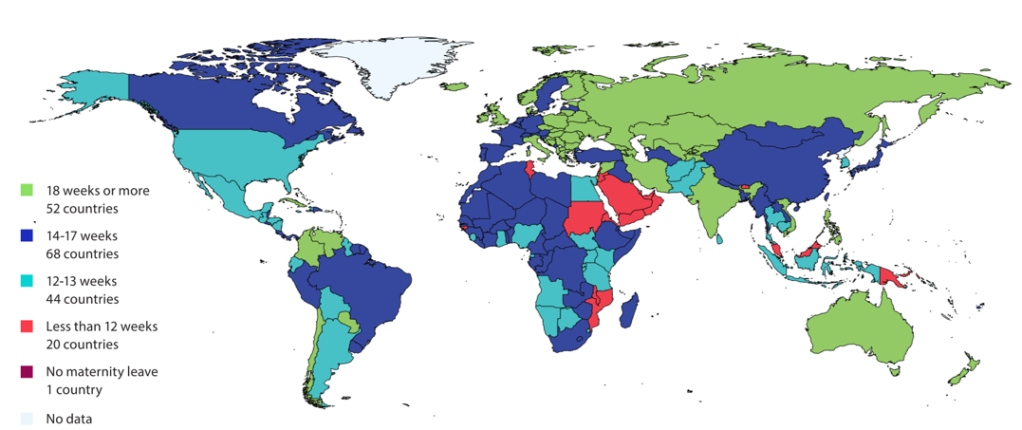A contribution by Lina Stein, Rodolfo Bezerra Nobrega and Diana Spieler
Raising a child in combination with a full-time career is no easy feat. That is true in general and maybe even more true in academia. Juggling the workload, conference attendance, or the potential requirement to move to a new job all become more demanding when children or other caretaking responsibilities are competing with each other. One would think that academia — a presumed flexible work environment — should be ideal for working parents, but often the focus on productivity measured in publications and funding secured does not make it easy to combine parenthood with science. As a result, around 34% of mothers leave STEM academia after having their first child (Powell, 2021). That is a huge loss of scientific talent.

“I’m a bit disillusioned about this system here […] I think eventually I will have to leave the university” — Female Postdoc in Germany.
Making parenthood more compatible with scientific careers demands systematic and societal changes. We know what works to start with: subsidized childcare, onsite childcare, flexible working schedules, and supportive working environments (Feeney & Stritch, 2019); but the implementation of the basics is still lacking in many institutions.
“A good daycare is worth its weight in gold.”
For this blog series, we gathered views on challenges, advice, and suggested changes in academia from several working parents in hydrology. Our aim is to offer reinforcement to early career scientists who are managing or going to take on childcare responsibilities. What is the best time during your career to have a kid? (Spoiler alert: there is no best time). How to best organize the work-life-kids balance? How to manage conferences, school holidays, or moving because of a new job. We extend this blog series with a list of recommendations to institutions on how they can take a leading role in implementing these systematic changes needed in our field to reduce the hassle for child caretakers.
We contacted several parents in research through our network and asked them to snowball our survey. The response was very enthusiastic: 20 people, equally split between women and men, answered with at times multiple pages of text. It shows that the topic really hit a nerve. The responses are mostly from Europe, though some Canadian, Australian and US perspectives are included as well.
In our blog series, we try to summarize the responses we got under three broad topics:
- Timing. At what time during their academic career did people have children and what were the pros and cons of that.
- Organisation. How do you best organize family life with research demands?
- Systematic change. What needs to be done to improve the support of parents in academia?

The question of timing
Parenting in academia is a complex journey filled with numerous challenges that often require a delicate balancing act. In our survey on navigating parenthood in academia, the first question we asked was: In which career stage or position (pre PhD, during PhD, PostDoc Phase, (Assistant) Professor, etc.) did you have your child(ren) and what were the benefits and challenges of having them during this time?
To put it short, there is no ideal time to have kids. Most parents in our survey had their children during their PhD and PostDoc, though some earlier and later career stages were mixed in. Almost all did not have a permanent contract when they decided to start their family. The prime time for starting a family therefore clashes with creating a competitive profile for the academic job market. No matter how careful the planning, the lack of sleep, decreased time and flexibility, and fewer networking opportunities will mean productivity takes a hit (Zheng et al., 2022).
A short path towards permanent positions or longer contract times would relieve a lot of the strain on parents. At the moment, the only option for planning security is to wait for a permanent position. However, not everyone wants to wait and having a baby at an older age as it comes with its own health risks for everyone involved.
What the responses showed is that there is neither perfect time nor recipe that works for everyone and everywhere. Different places offfer or lack different support, and other things besides career development play a role as well. Our hope is that this blog series can offer some awareness for those planning to have a child, and some support for those that already took the leap.
References
Feeney, M. K., & Stritch, J. M. (2019). Family-Friendly Policies, Gender, and Work–Life Balance in the Public Sector. Review of Public Personnel Administration, 39(3), 422–448. https://doi.org/10.1177/0734371X17733789
Powell, K. (2021). The parenting penalties faced by scientist mothers. Nature, 595(7868), 611–613. https://doi.org/10.1038/d41586-021-01993-x
Zheng, X., Yuan, H., & Ni, C. (2022). How parenthood contributes to gender gaps in academia. eLife, 11, e78909. https://doi.org/10.7554/eLife.78909
